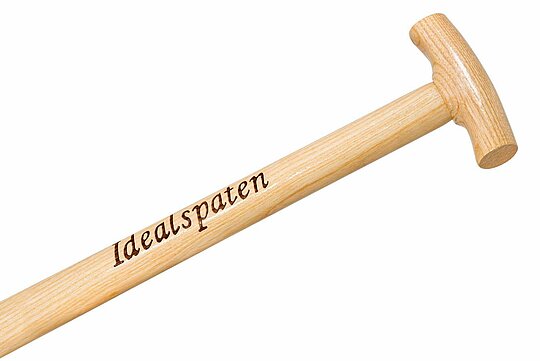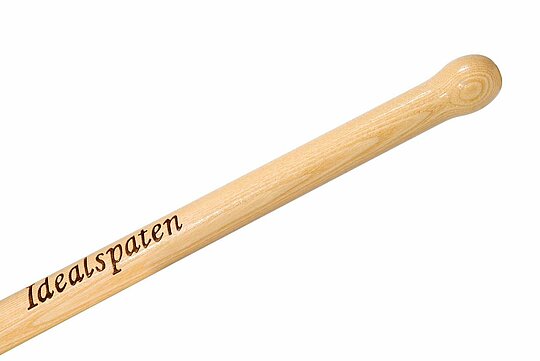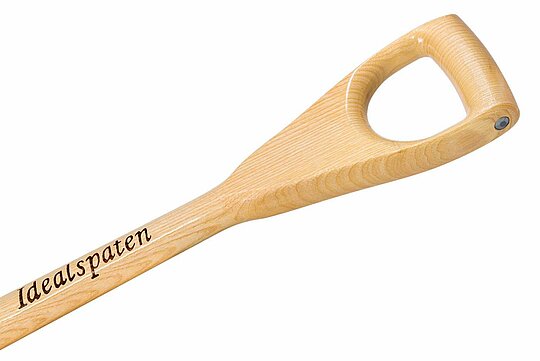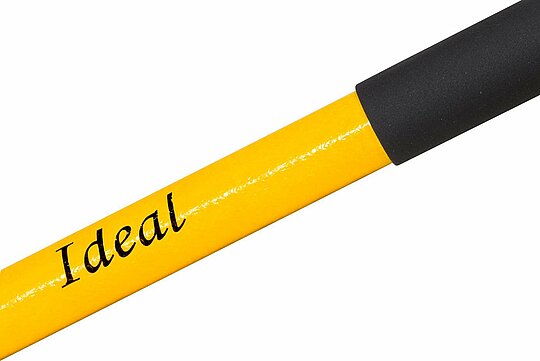The shaft is a very important element – in any garden tool! At the shaft, the tools are held securely and can be guided in a controlled manner. A good haptic and an optimal shape ensure comfortable usage. The quality of a spade shaft is extremely important, as it has to withstand a lot. Low-quality shafts break more quickly and can thus lead to accidents/injuries.
The most important thing first:
- The shaft is attached to the blade by a spring, a double spring or a gooseneck socket and, together with the handle, ensures good power transmission and safe guidance when working.
- Spade shafts are available with different handle types and depend on the intended use as well as personal preferences. For example, the knob handle is preferred in the north and parts of southern Germany – in the other regions mainly the T-handle is used.
- Most spades have a bent shaft– this refers to a slight curvature at the base of the shaft that provides a positive connection to the spade blade – this maximizes the load capacity of the spade. Some spades have a double bent shaft– this further curvature provides an optimal stand to the spade blade and can only be used on certain models. For the same reason, there are a few spades with a straight shaft.
- Most spade shafts are made of hard wood due to its excellent characteristics.
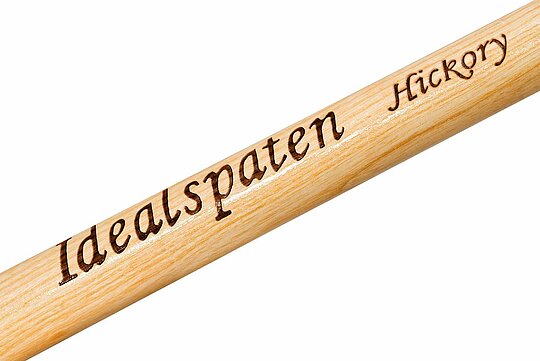
Wooden shafts
- as a renewable raw material, wood is conserving resources and is CO2-neutral
- very confortable haptic
- absorbs hand perspiration
- enables a firm grip
Beech:
- very resilient
- shocks get absorbed
- raw material of German origin
- inexpensive raw material
- not as resilient and elastic as ash or hickory wood
Ash:
- very resilient and flexible
- hard impacts get absorbed
- raw material from European origin
- relatively inexpensive raw material
Hickory:
- extremely tough and elastic
- up to 30% more resilient than ash wood
- hard impacts get absorbed
- raw material from North America/China
- expensive raw material
Shaft varnish:
- protection against contamination and moisture or fungal attack
- resistant to hand perspiration
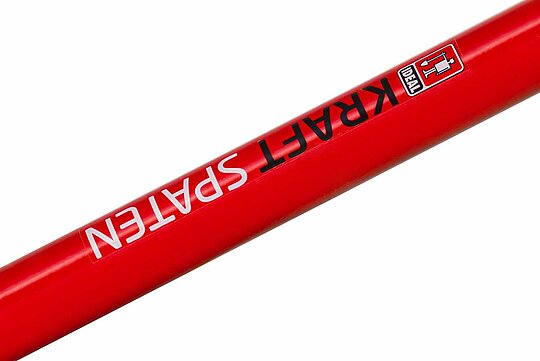
Steel shafts
- powder coating protects against corrosion
- steel is 100% recyclable without loss of quality
- does not absorb shocks
- unpleasant haptics for some users
Thin-walled tubular steel handle:
e.g. for the all steel spades
- very resilient
- material thickness: approx. 1.5 mm
- relatively high weight
- expensive raw material
Thick-walled tubular steel handle:
e.g. for the KRAFTSPATEN
- extremely resilient
- very high quality quenched and tempered steel
- material thickness: approx. 3.6 mm
- very high weight
- very expensive raw material











